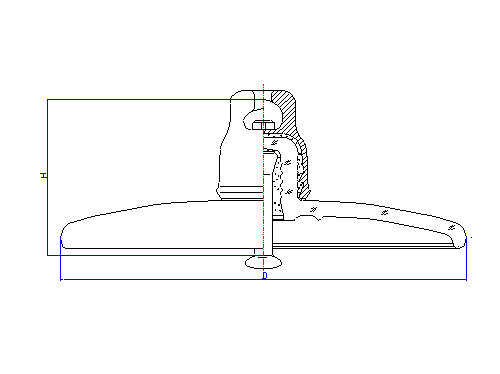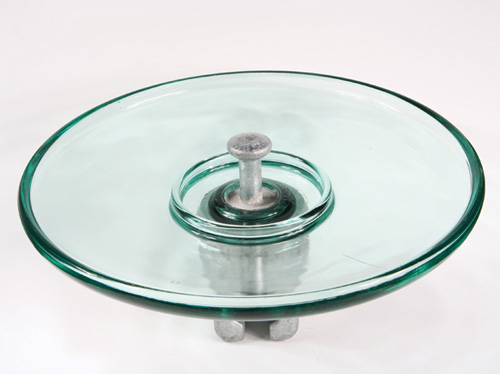

Open Air Profile Disc Insulator is an assembly of one or more shells with metallic fittings, Glass Electrical Insulators have means for non-rigid supporting. In operation, Profile Disc Glass Insulator is always connected to insulator string, Suspension Insulator set complete with the fittings is used to carry a line conductor or conductors at its lower end. U70BP-U120BP Profile Disc Toughened Glass Insulator comply with IEC, ANSI standard.
| MAIN DIMENSIONS AND STANDARD PARTICULARS | ||||||||
| Currency Designation | U70BP/146M | U100BP/127M | U120BP/127M | U120BP/146M | U160BP/146M | U160BP/155M | U160BP/170M | U160BP/170M |
| Designation | LXAP1-160 | LXAP-160 | LXAP-210 | LXAP-240 | ||||
| Diameter D,mm | 380 | 380 | 380 | 380 | 420 | 420 | 420 | 420 |
| Spacing H,mm | 146 | 146 | 127 | 146 | 146 | 155 | 170 | 170 |
| Creepage L,mm | 365 | 365 | 365 | 365 | 380 | 380 | 380 | 380 |
| Socket Soupling,mm | 16 | 16 | 16 | 16 | 20 | 20 | 20 | 20 |
| Mechanical Falling Load,KN | 70 | 100 | 120 | 120 | 160 | 160 | 210 | 210 |
| Mechanical Routine Test,KN | 35 | 50 | 60 | 60 | 80 | 80 | 105 | 105 |
| Wet Power Frequency withstand voltage,KV | 45 | 45 | 45 | 45 | 50 | 50 | 50 | 50 |
| Dry Lighting Impulse withstand voltage,KV | 90 | 90 | 90 | 90 | 95 | 95 | 95 | 95 |
| Impulse Puncture Voltage,PU | 2.8 | 2.8 | 2.8 | 2.8 | 2.8 | 2.8 | 2.8 | 2.8 |
| Power Frequency Puncture Voltage,KV | 130 | 130 | 130 | 130 | 130 | 130 | 130 | 130 |
| Radio Influence Voltage,μv | 50 | 50 | 50 | 50 | 50 | 50 | 50 | 50 |
| Corona Visual Test,KV | 18/22 | 18/22 | 18/22 | 18/22 | 18/22 | 18/22 | 18/22 | 18/22 |
| Power Frequency Electric arc voltage,KV | 0.12s/20ka | 0.12s/20ka | 0.12s/20ka | 0.12s/20ka | 0.12s/20ka | 0.12s/20ka | 0.12s/20ka | 0.12s/20ka |
| Net Weight per unit,KG | 5.3 | 5.2 | 5.3 | 5.4 | 7.2 | 7.2 | 7.3 | 7.3 |




We warmly welcome friends both domestic and abroad to visit our company, for more details about Glass Insulator , if you have any questions, please contact with us directly.
Open Air Profile Disc Insulator
Glass Electrical Insulators,Profile Disc Glass Insulator,Profile Disc Toughened Glass Insulator,Open Air Profile Disc Insulator
FUZHOU SINGREE IMP.& EXP.CO.,LTD. , https://www.cninsulators.com